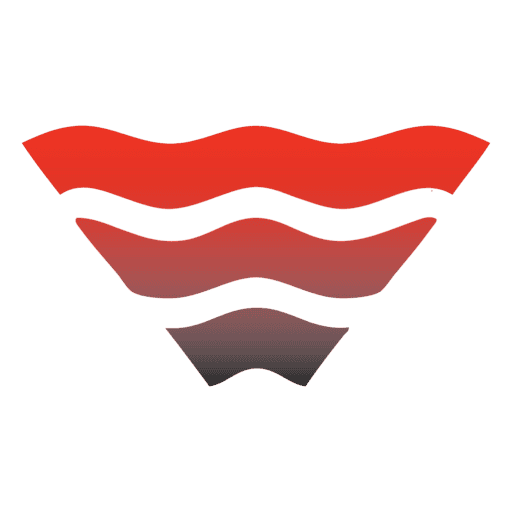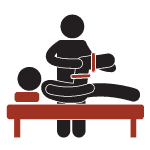Running Assessment / GAIT Analysis at Alliston physio clinic
Contact UsA GAIT Assessment is a detailed analysis of how a person walks. Its main purpose is to evaluate the various aspects of a person’s gait pattern, including their balance, stride length, step width and foot placement. Gait assessments are commonly used in healthcare, especially in physiotherapy practices. Similarly, a running assessment is a detailed analysis of an individual’s running pattern, including attributes such as cadence and heel striking. Both gait and running assessments can be useful in identifying biomechanical impairments contributing to an individual’s pain, or simply looking at improving their performance.
What is the purpose of a GAIT Assessment?
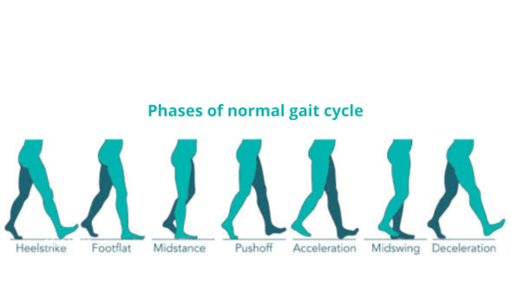
Gait assessments are commonly used in physiotherapy practice, whether it is due to a lumbar issue or a sports performance issue. More specifically, a gait assessment is for:
1. Identifying issues
Examining an individual’s gait can identify any abnormalities, asymmetries or inefficiencies in a person’s GAIT. This could be the cause of an underlying musculoskeletal, neurological or biomechanical issue. For example, how we may be walking around, such as hip swaying may be contributing to our hip pain.
2. Diagnosis
A gait assessment can help specifically diagnose a person’s condition or injury related to walking or mobility. For example, specific gait abnormalities may develop after suffering a stroke, Parkinson’s disease, various neurological conditions and other lower limb injuries.
3. Treatment planning
Depending on the assessment findings, your physiotherapist will develop an individualized treatment plan tailored to your specific needs and goals. If there are abnormalities in your GAIT, it will help your physiotherapist include exercises, assistive devices or potential other strategies to improve your gait.
4. Monitoring progress
If your physiotherapist has assessed your gait and noticed abnormalities, they will continue to re-assess your gait pattern to see your progress.
5. Prevention
Identifying gait abnormalities may help to reduce the potential for further injury as well as help you rehab your current injury. It may also be beneficial in sports and fitness contexts, as a gait assessment can identify potential risk factors for injuries. If identified, the physiotherapist can help you with preventative strategies such as exercises, footwear recommendations or modifications to your activities/training programs.
What is the purpose of a Running Assessment?
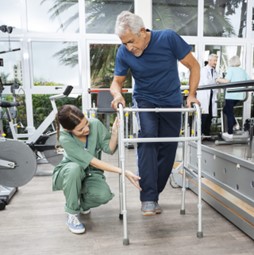
Running assessments are also commonly used in physiotherapy practice to help someone recovering from an injury to better optimize their running pattern. Here are some specific purposes of a running assessment:
1. Running form analysis
This includes a detailed analysis of an individual’s running form including their posture, stride length, cadence, foot strike pattern, arm swing and overall body alignment during running.
2. Identifying biomechanical issues
The physiotherapist may identify biomechanical issues (i.e. overpronation of the foot) that are contributing to an individual’s irritation or potentially an inefficient running pattern. Identifying these biomechanical issues may help to reduce the risk of injury in the future.
3. Injury prevention
By identifying potential risk factors related to running mechanics (i.e. muscle imbalances), a running assessment can enable proactive measures to prevent common running injuries such as shin splints, IT band syndrome and stress fractures.
4. Performance optimization
For athletes and runners looking to improve their performance, a running assessment can provide valuable information into areas for improvement. This can include stride efficiency, running economy, pacing strategies and many more.
5. Footwear and equipment recommendations
Depending on the running assessment findings, recommendations may be made by your physiotherapist. This can include appropriate footwear or other running gear that can support your specific running pattern to improve your comfort and performance.
6. Training guidance
A running assessment may also provide information on specific areas to improve with strength and mobility. Recommendations may also be made on running technique modifications and training volume adjustments tailored to your specific goals and running pattern.
What are common injuries from poor running form?
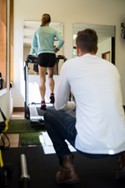
- Shin splints
- Iliotibial band syndrome
- Patellofemoral pain syndrome (Runner’s knee)
- Achilles tendinitis
- Plantar fasciitis
- Stress fractures
- Muscle strains and overuse injuries
What does a GAIT running assessment involve?
Depending on your condition and goals, your gait/running assessment may look different. Some components your physiotherapist may include are:
1. Medical history
The assessment will begin with a detailed health history taken to gather past medical interventions, injuries, current symptoms and complaints about your walking or running.
2. Observation
Depending on the reason for your appointment, you will be asked to walk for a gait assessment or run on a treadmill for a running assessment. During your walk or run, the physiotherapist will observe your pattern, likely from different angles to assess your posture, body alignment, step length and cadence. Your physiotherapist may ask you to record a video of your gait/running, which will aid them in slowing down your gait cycle for more accurate assessment.
3. Functional tests
Additional functional tests may be performed to assess balance, coordination, muscle strength, and joint range of motion. This will help to identify other contributing factors to your gait abnormalities.
4. Interpretation and recommendations
Based on your assessment findings, the physiotherapist will interpret the data and develop a personalized treatment plan.
Overall, gait and running assessments are comprehensive processes that combine clinical observation, biomechanical analysis and functional testing to assess your movement patterns. This ultimately is to improve your discomfort and performance.
Contact our Alliston physio clinic to book your Running analysis or GAIT Assessment.
MANUAL AND MANIPULATIVE THERAPY
Our therapists use a variety of hands on techniques to both accurately assess and efficiently treat patients. Specialized training through the Orthopaedic Division of the Canadian Physiotherapy Association (orthodiv.org) allows for accurate diagnosis and faster recovery. Fellows of the Canadian Academy of Manipulative Physiotherapists (FCAMPT) have taken extensive post-graduate training and have received international recognition in hands on techniques.
manippt.org
CONCUSSION MANAGEMENT
At South Simcoe Physiotherapy we have training in the Shift Concussion Management Program (shiftconcussion.ca). Using this program as a basis, we thoroughly assess the individual systems often effected in a concussion using a variety of tests, as well as cognitive tools such as imPact. Once an accurate assessment has been performed, we develop a multi-faceted rehabilitation strategy to return the individual to optimal function.
PELVIC HEALTH
massage therapy
Massage therapy is a form of hands in treatment that affects the body’s soft tissues such as the muscles, connective tissue, ligaments, tendons and joints. Massage therapy can have therapeutic effects on the muscular, circulatory, and nervous systems. For more information on Registered massage therapy please visit: www.rmtao.com
acupuncture
Acupuncture is rooted in Traditional Chinese Medicine and uses tiny needles which are inserted into various points in the body. Acupuncture stimulates the body’s natural healing mechanisms and is effective in treating a variety of conditions including headaches, back pain, neck pain, various overuse and sports injuries. Our therapists have training in acupuncture through Acupuncture Canada ( https://www.acupuncturecanada.org)
RUNNING ASSESSMENT / GAIT ANALYSIS
Gait analysis and Running Assessments can be useful in determining biomechanical irregularities during either walking or running that are either causing or are caused by a certain condition or injury. Gait analysis can also help to identify inefficiencies that may be reducing performance in runners and perhaps predisposing or contributing to injury.
We use multiple tools to analyze a person’s gait. First, we use our physiotherapy backgrounds and knowledge of biomechanics. By observing someone walking/running/using the treadmill (and perhaps recording them) we can often identify these major faults. A biomechanical exam can also aid in this process through identifying structural limitations, muscle weakness and tone, and a variety of other potential faults. Finally, using training from courses such as those taught at The Running Clinic https://therunningclinic.com/en, can help to consolidate all of this information while allowing us to make recommendations on items such as footwear, training schedules, and other information relevant to your specific situation.
IMS/IDN
Intramuscular Stimulation and Integrated Dry-Needling. Both IMS and IDN are forms of dry needling where an acupuncture needle is inserted into a taut band in a shortened muscle or near the nerve root in order to cause a reflex relaxation of the muscle, a micro trauma to stimulate natural healing and create an action potential to restore normal nerve conduction. This technique can be extremely useful to treat chronic pain, myofascial pain syndromes, many sports injuries, and overuse injuries. For more information visit: www.istop.org
exercise prescription
Exercise is an essential part of all rehabilitation programs. In order to restore normal muscle length and strength, correct biomechanical faults and return to function, exercises need to be specifically tailored to suit individual needs.
custom bracing
Our clinic is pleased to offer custom braces to aid in conditions such as ACL tears, meniscus injuries, knee osteoarthritis and more. View our selection of products at www.kratoshealth.ca
shockwave therapy
Shockwave is a non-invasive way to treat many muscular, tendinous, ligamentous, and bone problems that lead to pain and loss of function. Briefly stated it uses strong energy pulses to stimulate increased blood flow and metabolism allowing regeneration of damaged tissue. A phenomenon called “micro-cavitation” occurs where “bubbles’ expand and burst creating a force that penetrates damaged tissue and stimulates cell reparation. Shockwave is especially effective in treating issues that have been unresponsive to other conservative methods.
VIDEO AND TELEPHONE CONSULTATIONS
At a time when social distancing is necessary, we are pleased to be able to offer our exceptional care in an alternative method. Video consultations (think FaceTime or Skype) can be an effective method to assess and treat musculoskeletal and other physiotherapy appropriate impairments. A thorough analysis can be conducted by performing a detailed subjective, observing individual movements, performing simple tasks and special tests, and evaluating the environmental factors which are aggravating the condition. From there, our therapist can devise an appropriate treatment plan including self management strategies, modifications, and exercises appropriate to address your condition. The therapist is easily able to demonstrate the exercises and observe you performing them, and can even send you video demonstrations of the exercises. For those that are unable to access reliable internet, or do not regularly use a computer, telephone consults are also an option.
No doctor's referral is necessary and these sessions are covered by most insurers
NATUROPATHY
Frequently Asked Questions
What is physiotherapy?
Simply stated, physiotherapy is the treatment of deficits and disease without the use of medications. Physiotherapy is useful for the majority of injuries and ailments one might suffer. The goal of our physiotherapists is to reduce your symptoms and allow you to return to function in a timely manner. If you are unsure if your condition is appropriate for physiotherapy, please feel free to contact us.
How do I pay for your services?
Does OHIP cover physiotherapy?
Do I need a doctor’s referral to come and see you?
What do I need to wear for my assessment?
Will my private insurance cover the cost of this treatment?
What if my injuries are as a result of a motor vehicle accident or workplace injury?
- Date of accident
- Claim number
- Adjuster’s name and contact information
- Private health insurance information (if applicable)
- Area of injury
We are able to direct bill your motor vehicle insurance, but please note that all of your private health insurance must be used prior to accessing your motor vehicle insurance. These rules are mandated by the Financial Services Commission of Ontario and not our clinic.
Workplace injury (WSIB): we often treat people as a result of a workplace injury, however, we do not bill WSIB directly. If your injury is part of a WSIB claim, you are expected to pay just as other clients and then submit your invoices to WSIB.
